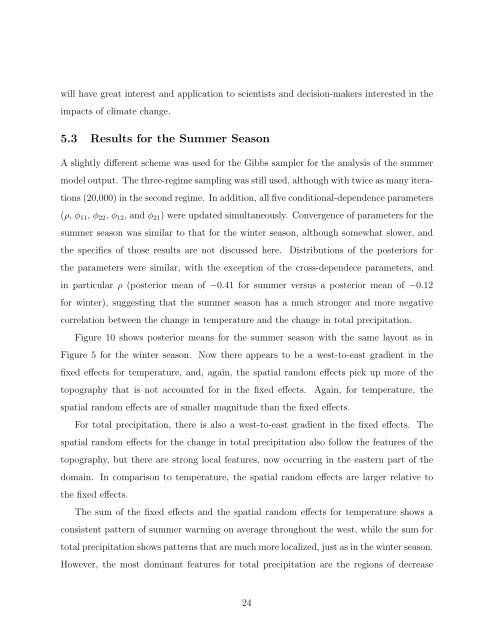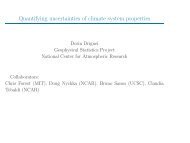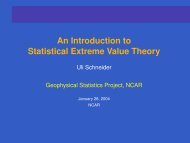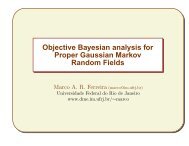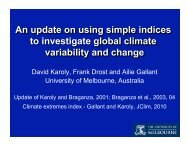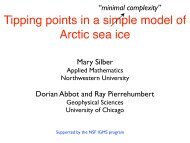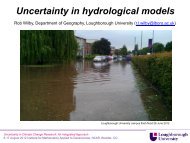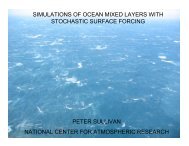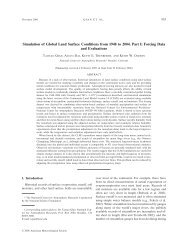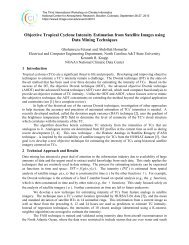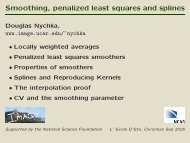A Spatial Analysis of Multivariate Output from Regional ... - IMAGe
A Spatial Analysis of Multivariate Output from Regional ... - IMAGe
A Spatial Analysis of Multivariate Output from Regional ... - IMAGe
Create successful ePaper yourself
Turn your PDF publications into a flip-book with our unique Google optimized e-Paper software.
will have great interest and application to scientists and decision-makers interested in theimpacts <strong>of</strong> climate change.5.3 Results for the Summer SeasonA slightly different scheme was used for the Gibbs sampler for the analysis <strong>of</strong> the summermodel output. The three-regime sampling was still used, although with twice as many iterations(20,000) in the second regime. In addition, all five conditional-dependence parameters(ρ, φ 11 , φ 22 , φ 12 , and φ 21 ) were updated simultaneously. Convergence <strong>of</strong> parameters for thesummer season was similar to that for the winter season, although somewhat slower, andthe specifics <strong>of</strong> those results are not discussed here. Distributions <strong>of</strong> the posteriors forthe parameters were similar, with the exception <strong>of</strong> the cross-dependece parameters, andin particular ρ (posterior mean <strong>of</strong> −0.41 for summer versus a posterior mean <strong>of</strong> −0.12for winter), suggesting that the summer season has a much stronger and more negativecorrelation between the change in temperature and the change in total precipitation.Figure 10 shows posterior means for the summer season with the same layout as inFigure 5 for the winter season. Now there appears to be a west-to-east gradient in thefixed effects for temperature, and, again, the spatial random effects pick up more <strong>of</strong> thetopography that is not accounted for in the fixed effects. Again, for temperature, thespatial random effects are <strong>of</strong> smaller magnitude than the fixed effects.For total precipitation, there is also a west-to-east gradient in the fixed effects. Thespatial random effects for the change in total precipitation also follow the features <strong>of</strong> thetopography, but there are strong local features, now occurring in the eastern part <strong>of</strong> thedomain. In comparison to temperature, the spatial random effects are larger relative tothe fixed effects.The sum <strong>of</strong> the fixed effects and the spatial random effects for temperature shows aconsistent pattern <strong>of</strong> summer warming on average throughout the west, while the sum fortotal precipitation shows patterns that are much more localized, just as in the winter season.However, the most dominant features for total precipitation are the regions <strong>of</strong> decrease24


